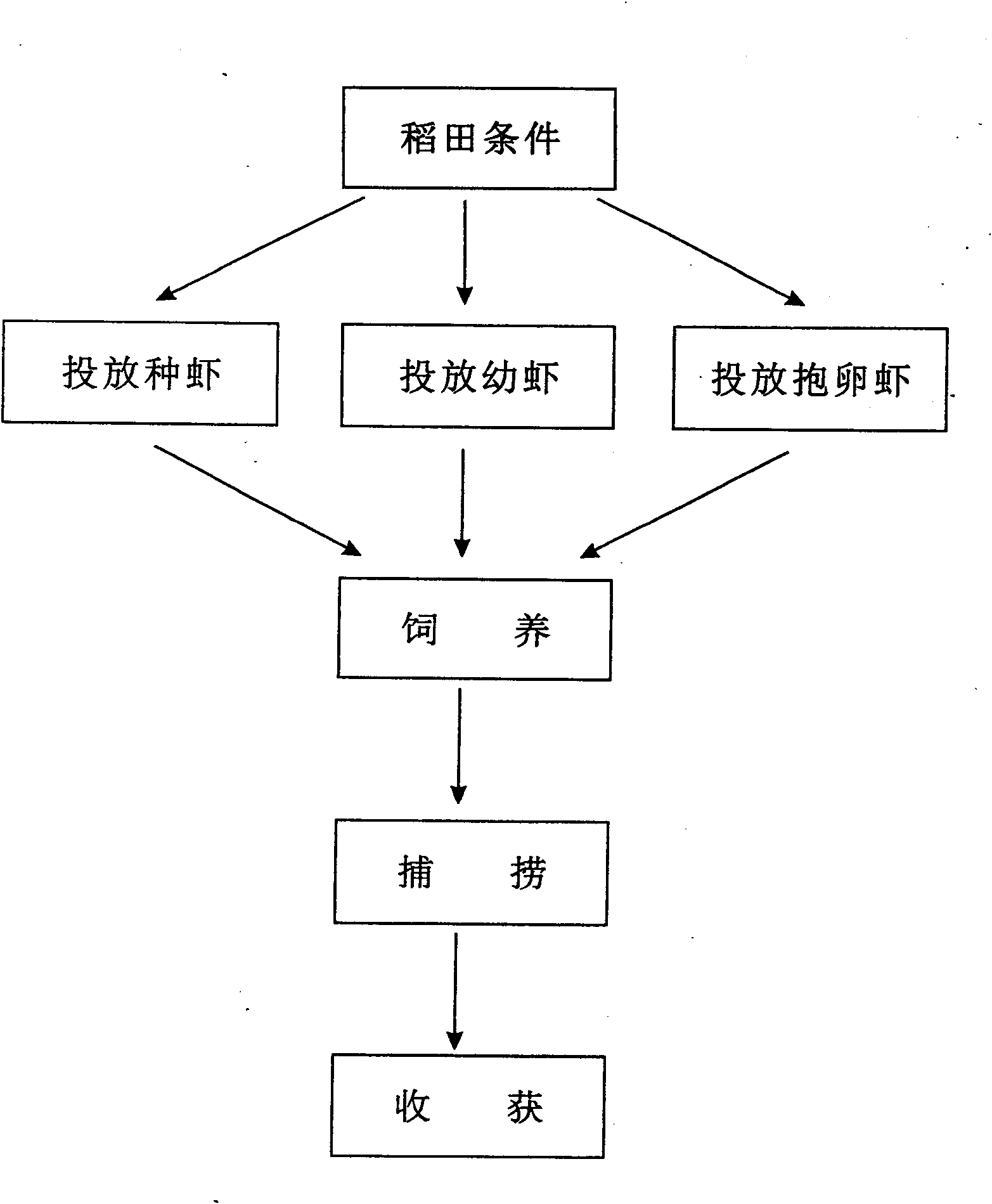Crayfish rice continuous-cropping breeding and planting technology
A technology, rice field technology, applied in the field of freshwater aquaculture, can solve problems such as low resource utilization rate, weak artificial breeding technology, and no good technical solutions
- Summary
- Abstract
- Description
- Claims
- Application Information
AI Technical Summary
Problems solved by technology
Method used
Image
Examples
Embodiment 1
[0022] according to figure 1 Shown shrimp rice continuous cropping breeding technology, one of its schemes:
[0023] 1. Conditions for continuous cropping of shrimp and rice
[0024] Choose paddy fields with good water quality, sufficient water volume, no pollution sources, and convenient drainage and irrigation for shrimp farming. The paddy field covers an area of five hectares. In the ridge of the paddy field, a circular feeding ditch with a width of 2 meters and a depth of 1.5 meters is excavated along the four sides, and a "ten" ditch is excavated in the middle. The ditch is 1 meter wide and 0.5 meters deep. The circular feeding ditch and the field ditch account for about 8% of the paddy field area. . Use the soil excavated from the excavation of the circular breeding ditch to reinforce, widen and heighten the field ridges. It is required to store 50cm deep water, the field ridges are 3 meters wide, and anti-escape facilities are installed at the water inlet and outle...
Embodiment 2
[0032] according to figure 1 Shown shrimp rice continuous cropping breeding technology, its scheme two:
[0033] 1. Conditions for continuous cropping of shrimp and rice
[0034] Choose paddy fields with good water quality, sufficient water volume, no pollution sources, and convenient drainage and irrigation for shrimp farming. The paddy field covers an area of five hectares. In the paddy field ridge, a circular feeding ditch with a width of 2 meters and a depth of 1.5 meters was excavated along the four sides, and a "ten" ditch was excavated in the middle, with a width of 1 meter and a depth of 0.5 meters. Feeding ditch and field ditch account for about 8% of the paddy field area. Use the soil excavated from the excavation of the circular breeding ditch to reinforce, widen and heighten the field ridges. It is required to store 50cm deep water, the field ridges are 3 meters wide, and anti-escape facilities are installed at the water inlet and outlet to prevent crayfish fr...
Embodiment 3
[0042] according to figure 1 Shown shrimp rice continuous cropping breeding technology, its scheme three:
[0043] 1. Conditions for continuous cropping of shrimp and rice
[0044] Choose paddy fields with good water quality, sufficient water volume, no pollution sources, and convenient drainage and irrigation for shrimp farming. The paddy field covers an area of five hectares. In the paddy field ridge, a circular feeding ditch with a width of 2 meters and a depth of 1.5 meters was excavated along the four sides, and a "ten" ditch was excavated in the middle, with a width of 1 meter and a depth of 0.5 meters. Feeding ditch and field ditch account for about 8% of the paddy field area. Use the soil excavated from the excavation of the circular breeding ditch to reinforce, widen and heighten the field ridges. It is required to store 50cm deep water, the field ridges are 3 meters wide, and anti-escape facilities are installed at the water inlet and outlet to prevent crayfish ...
PUM
 Login to View More
Login to View More Abstract
Description
Claims
Application Information
 Login to View More
Login to View More - R&D
- Intellectual Property
- Life Sciences
- Materials
- Tech Scout
- Unparalleled Data Quality
- Higher Quality Content
- 60% Fewer Hallucinations
Browse by: Latest US Patents, China's latest patents, Technical Efficacy Thesaurus, Application Domain, Technology Topic, Popular Technical Reports.
© 2025 PatSnap. All rights reserved.Legal|Privacy policy|Modern Slavery Act Transparency Statement|Sitemap|About US| Contact US: help@patsnap.com

